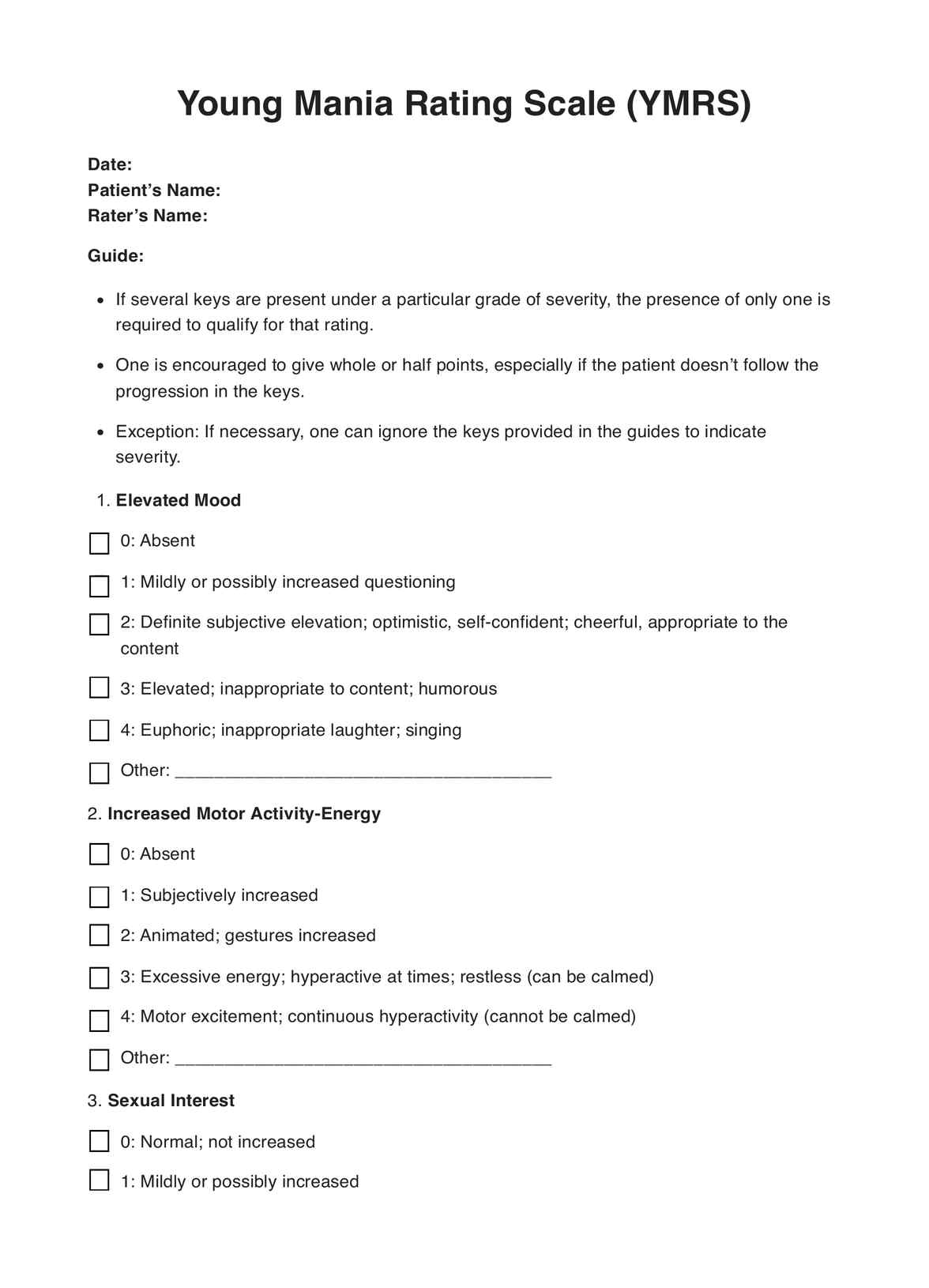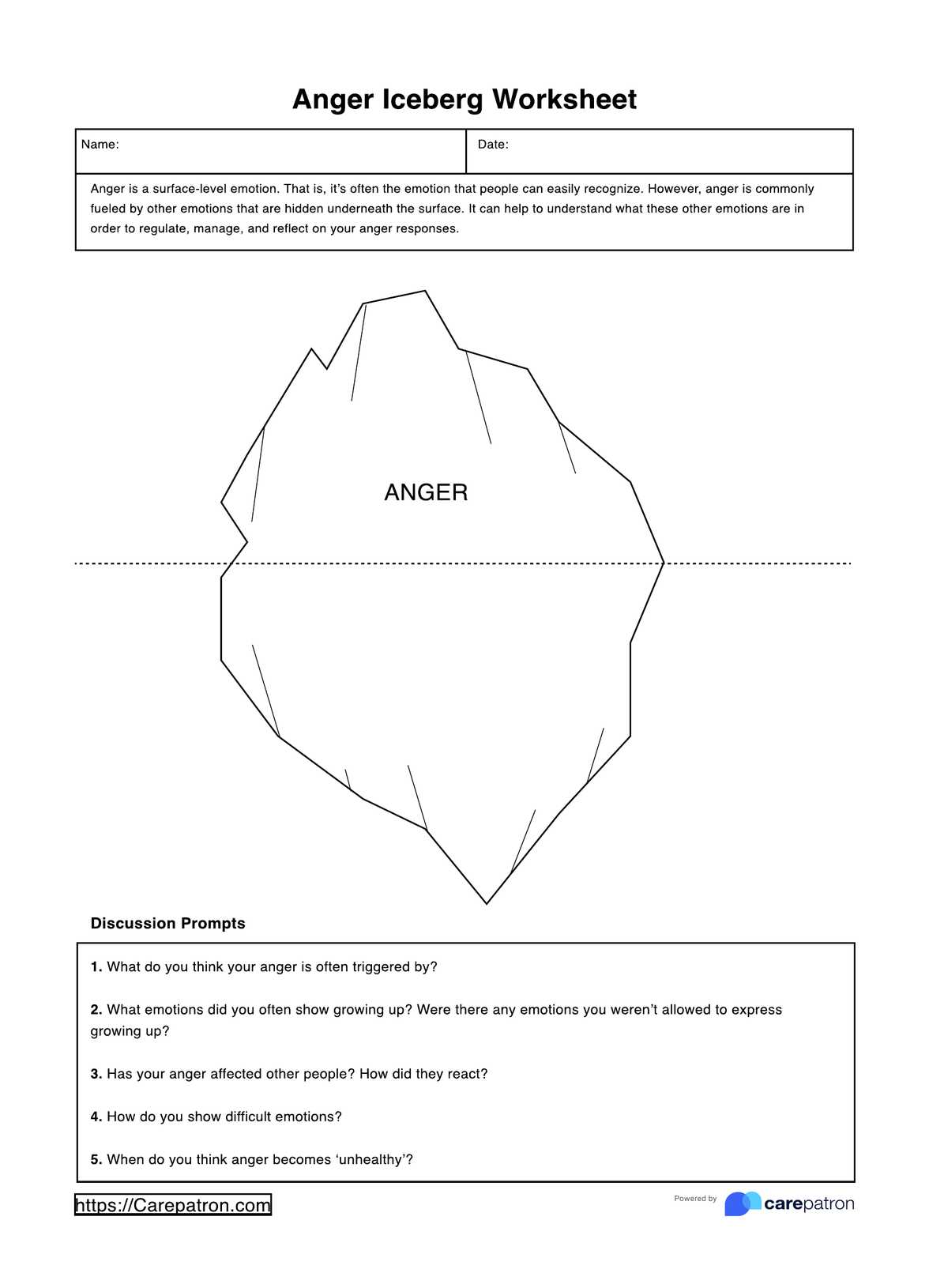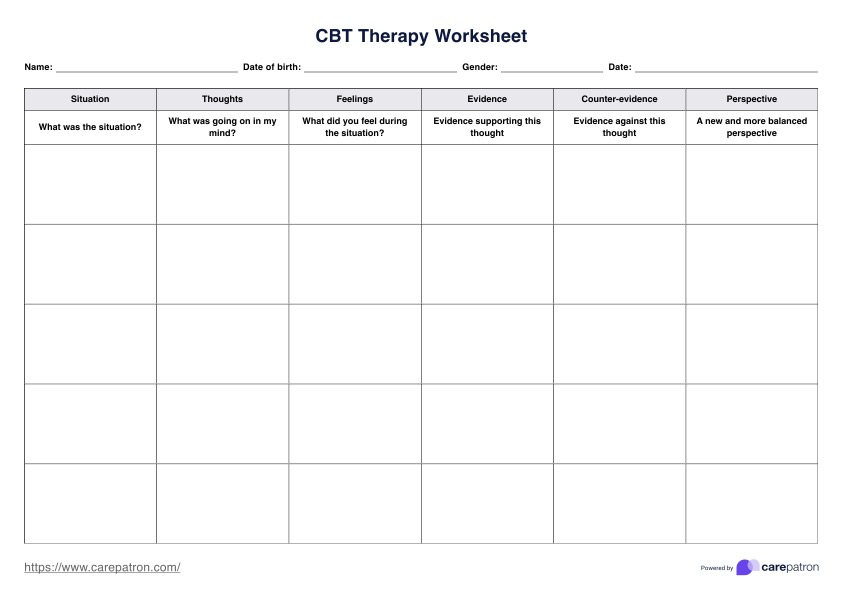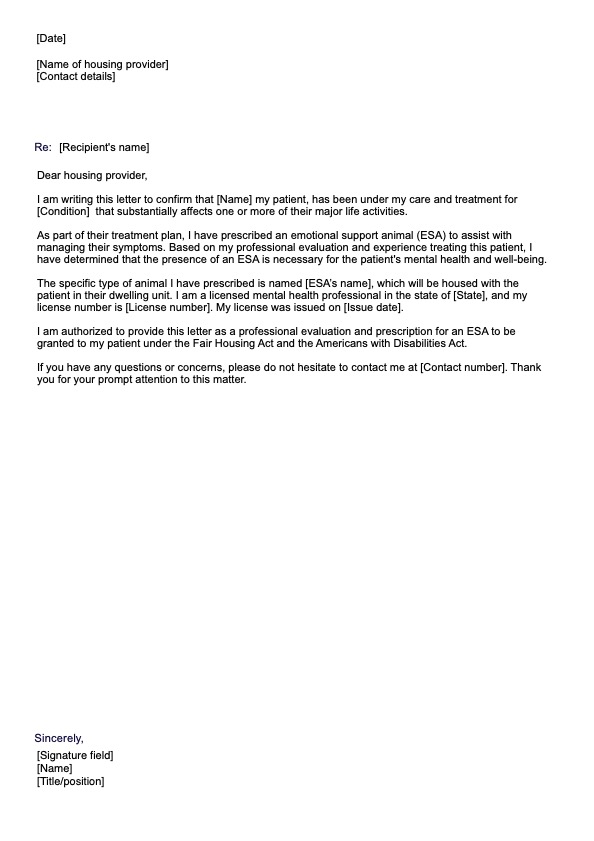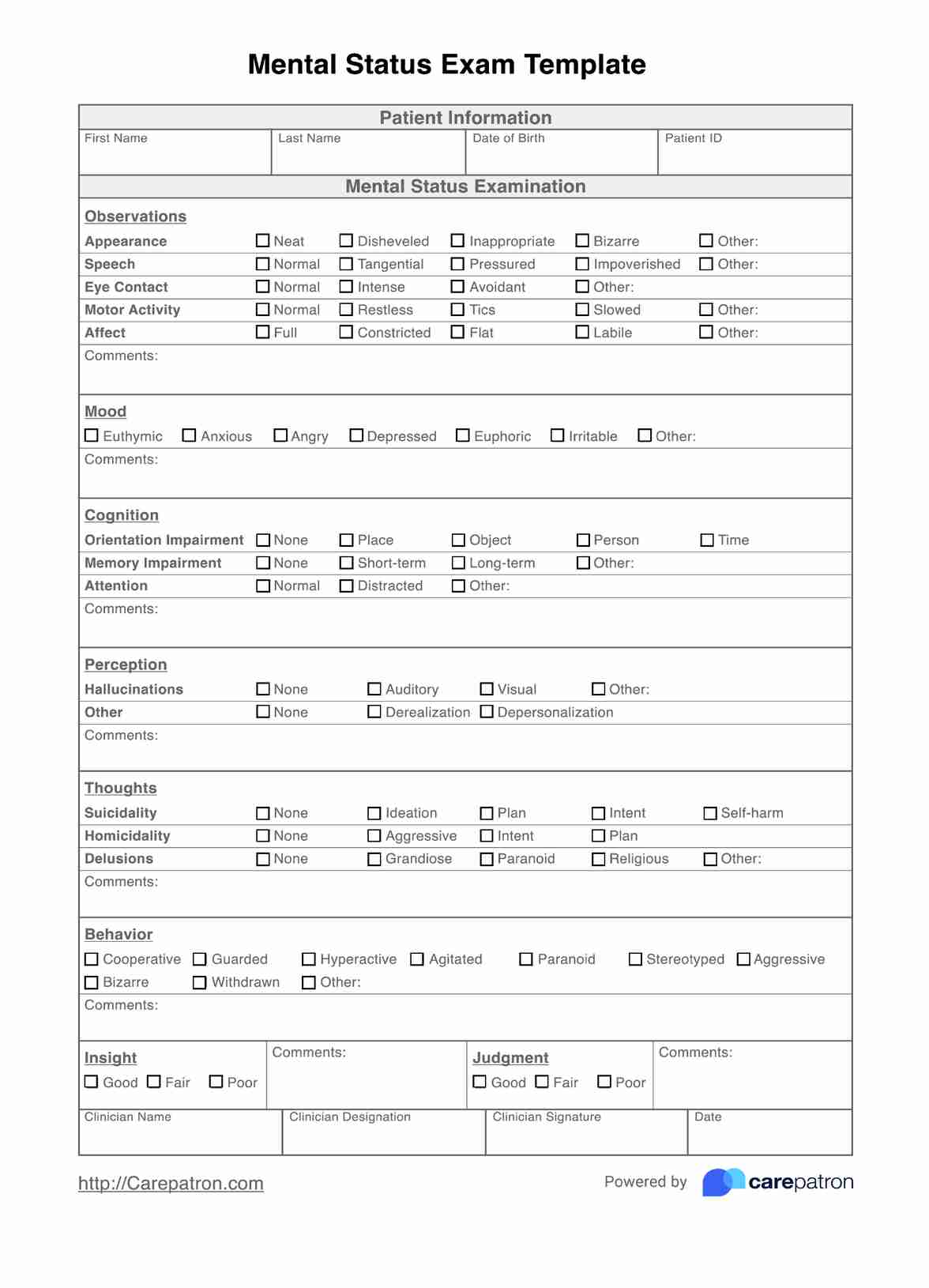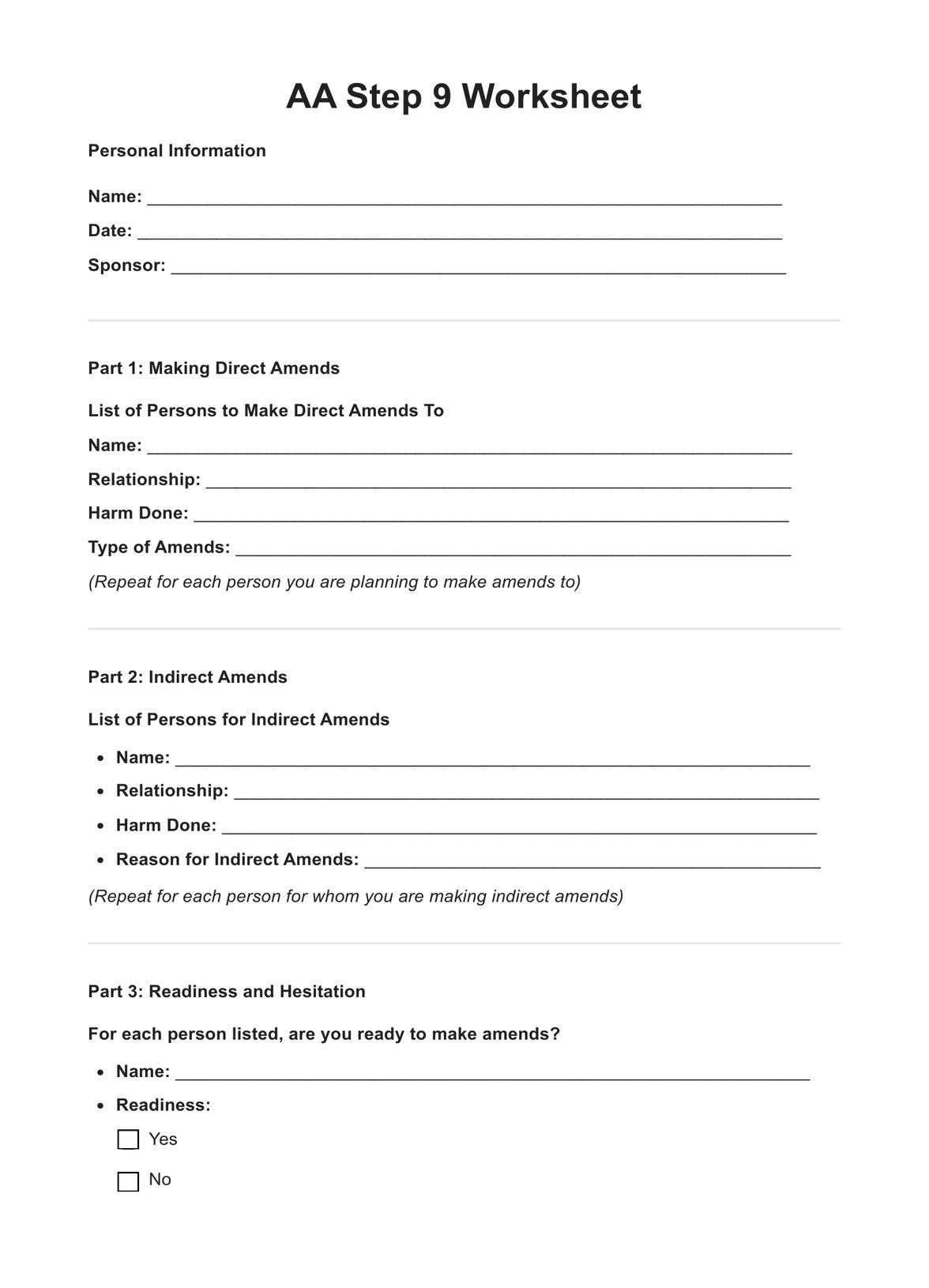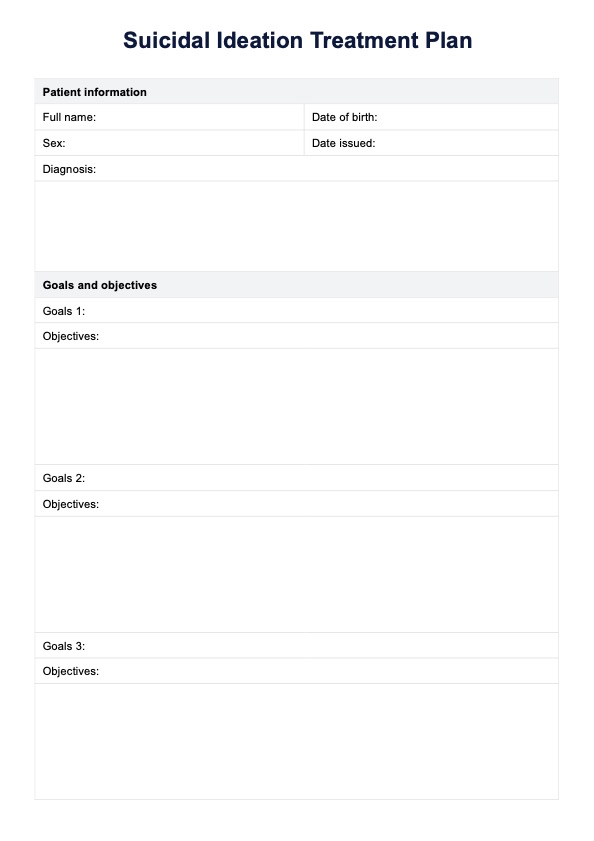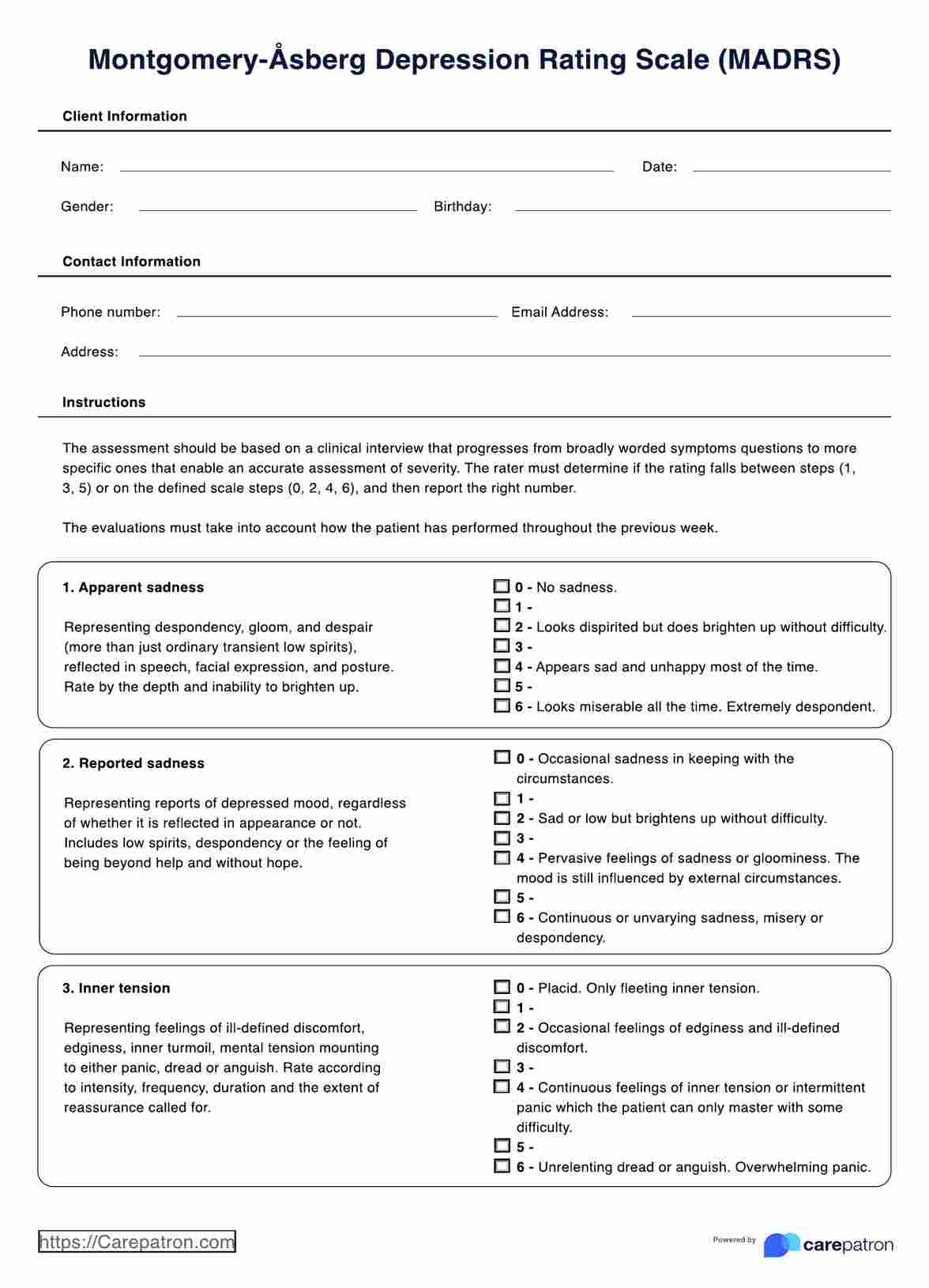Differentiation of Self Worksheet
Try the Differentiation of Self Worksheet, which enhances emotional and relational health. Gain insights into personal development and improved interactions.


Understanding self-differentiation
Differentiation of self is a concept developed by psychiatrist Murray Bowen and serves as a fundamental element of Bowen Family Systems Theory. This concept describes an individual’s ability to distinguish between their thoughts and feelings, and those of others around them. Differentiation is about being able to maintain personal values and emotional stability independently from the emotional states of others within their relationship system.
The concept was first introduced as part of an effort to understand and describe the complex interactions within family systems, including influences from past generations. It plays a crucial role in influencing individual behavior patterns, relationship dynamics, and psychological health. Higher levels of self-differentiation are associated with better psychological adjustment and lower levels of anxiety and chronic stress.
The importance of differentiation in emotional and relational health
Differentiation of self is crucial for emotional and relational health because it affects how individuals react under stress, manage interpersonal relationships, and maintain their sense of self in complex emotional environments. Here are some reasons why differentiation is so important:
- Emotional resilience: People with higher levels of differentiation exhibit greater emotional resilience. They are better equipped to handle stress and less likely to react impulsively. This stability allows them to respond more thoughtfully in emotionally charged situations.
- Healthier relationships: Differentiated individuals can maintain closeness without losing their sense of self. This balance enables healthier, more fulfilling relationships. They are less prone to co-dependency, can express their needs more clearly, and are more adept at setting and respecting boundaries.
- Authenticity and independence: High differentiation fosters a strong internal locus of control, which encourages individuals to live in accordance with their true self, not merely conforming to external expectations. This authenticity is key to personal development and fulfillment.
- Conflict management: With a clear understanding of where they end and others begin, differentiated individuals can navigate conflicts more effectively, often resolving them in ways that respect both their needs and those of others.
Differentiation of Self Worksheet Template
Differentiation of Self Worksheet Example
Foundational concepts of self-differentiation
Differentiation of self is composed of several interconnected components, each playing a crucial role in how individuals manage their emotional and relational lives. Understanding these foundational concepts can help individuals and therapists identify areas for growth and development.
Emotional reactivity
Emotional reactivity refers to the extent to which a person's emotional reactions are governed by emotions rather than thoughtful responses. Individuals with lower differentiation levels may find that their emotions dramatically sway their decisions, often leading to escalated conflicts or withdrawal in relationships. Reducing emotional reactivity involves recognizing these patterns and learning to calm one’s emotional responses to maintain clarity and objectivity in stressful situations.
"I" position
The "I" position is a term used to describe a person's ability to assert their beliefs and thoughts independently of the emotional pressures surrounding them. This concept is crucial for maintaining an authentic self-expression and not merely conforming to the group's emotional or thought patterns. It involves expressing one's own opinions and values clearly and calmly, even when they differ from those of close family or friends.
Emotional cutoff
Emotional cutoff describes how individuals manage their unresolved emotional issues with family members by reducing or cutting off emotional contact. This mechanism might serve as a temporary relief from stress but often hampers the ability to fully resolve conflicts and grow in relationships. Identifying and addressing emotional cutoff can lead to more mature and complete resolutions to family tensions.
Fusion with others
Fusion represents the blurring of emotional and intellectual boundaries between self and others, leading to a loss of individuality. In highly fused relationships, choices and beliefs are significantly influenced or dictated by others, reducing one’s ability to act independently. Understanding and reducing fusion involves distinguishing one’s own desires and thoughts from those of others, promoting healthier and more autonomous decision-making.
How to use our Differentiation of Self Worksheet template?
Our Differentiation of Self Worksheet template is designed to facilitate a structured exploration of an individual's self-differentiation. It helps both therapists and patients identify areas of emotional reactivity, dependence, and autonomy in relationships. Here's how healthcare professionals can effectively use this template in their practice:
Step 1: Access this template
First, healthcare professionals need to access the template. It is available digitally on the Carepatron platform, making it accessible for immediate use in therapy sessions. The template can also be customized, downloaded, and printed, allowing for flexibility in how it is utilized—whether in person or in a virtual setting.
Step 2: Explain the template
Before beginning the worksheet, it’s important for therapists to explain its structure and purpose to the patient. Discuss each section of the template to ensure the patient understands what kinds of information they will need to provide and how this exercise can aid their therapy. This preliminary step sets the stage for a productive session by framing the worksheet as a tool for self-discovery and personal growth.
Step 3: Fill out the worksheet
As the session progresses, guide the patient through each part of the worksheet. Encourage them to reflect on specific instances of emotional reactivity, decisions influenced by others, and times when they felt they lost their sense of individuality. Alternatively, the client can fill it out on their own. What's important is that the process should be introspective, allowing the patient to recognize and articulate their experiences and feelings.
Step 4: Analyze and discuss the findings
After the patient has completed the worksheet, review their responses together. This discussion is crucial as it helps the patient understand the patterns in their behavior and thinking and how they relate to their differentiation levels. Use this opportunity to deepen their insight into their emotional and relational dynamics and start considering growth changes or strategies.
By using the Differentiation of Self Worksheet, therapists can help patients gain a deeper understanding of their emotional boundaries and relationship patterns. This tool is valuable for guiding discussions that encourage personal development and healthier interpersonal interactions.
Strategies for enhancing differentiation
Enhancing self-differentiation is a transformative process that requires intentional effort and practical strategies. These approaches help individuals develop stronger boundaries, reduce emotional reactivity, and maintain their sense of self in relationships.
Here are some effective strategies to help individuals enhance their self-differentiation:
- Develop emotional regulation skills: Manage emotional reactivity through mindfulness practices, deep breathing, or meditation. These techniques help individuals respond thoughtfully rather than react impulsively, maintaining clarity even in emotional situations.
- Set clear boundaries: Define personal limits clearly and communicate them effectively. Establishing boundaries is crucial for maintaining an individual’s sense of self and preventing emotional enmeshment with others.
- Cultivate independentinterests: Pursue activities and hobbies that reflect personal passions, separate from those of family or friends. This independence reinforces a strong sense of self and lessens reliance on others for validation.
- Engage in regular self-reflection: Use tools like journaling to explore personal emotional responses and behaviors. Self-reflection helps identify triggers and patterns that may lead to a loss of differentiation.
Each strategy here can help a person improve their self-differentiation, leading to enhanced emotional resilience, healthier relationships, and a more authentic life experience. Each step forward in this journey contributes to greater personal empowerment and interpersonal harmony.
Applying differentiation in various aspects of life
Differentiation of self is not only fundamental for personal growth but also plays a crucial role across various aspects of life. Enhancing this trait can lead to significant improvements in how individuals interact within different contexts, from intimate relationships to professional environments.
Increased self-differentiation can make a profound impact in these areas:
- Intimate relationships: Higher levels of differentiation allow individuals to engage in intimate relationships without losing their sense of self. This leads to healthier dynamics where emotional needs are communicated more clearly and respectfully.
- Family dynamics: In family settings, a well-differentiated individual can manage conflicts more effectively, resist taking on the emotional burdens of other family members, and interact in a way that promotes mutual respect and understanding.
- Workplace interactions: At work, differentiation helps individuals assert their ideas and manage disagreements more constructively, without succumbing to peer pressure or hierarchical influences. This ability is especially valuable in leadership or team-based roles.
- Managing anxiety and stress: Improved differentiation equips individuals with the tools to handle personal stress and anxiety without allowing these feelings to dominate their actions or decision-making processes.
By applying principles of self-differentiation across these key areas, individuals can experience a more stable and satisfying life, marked by enhanced personal agency and healthier relationships. This broader application underscores the universal relevance and benefits of developing a strong sense of self-differentiation.
Commonly asked questions
Differentiation of self is crucial because it determines an individual's ability to maintain their identity and emotional stability in close relationships. Higher levels of differentiation allow for healthier interpersonal interactions and greater personal resilience.
The main components of differentiation of self include emotional reactivity, "I" position, emotional cutoff, and fusion with others. Each component affects how individuals relate to others and manage their emotional lives.
An example of differentiation of self is when an individual can express their own opinions and needs in a relationship without succumbing to pressure to conform or experiencing overwhelming anxiety.


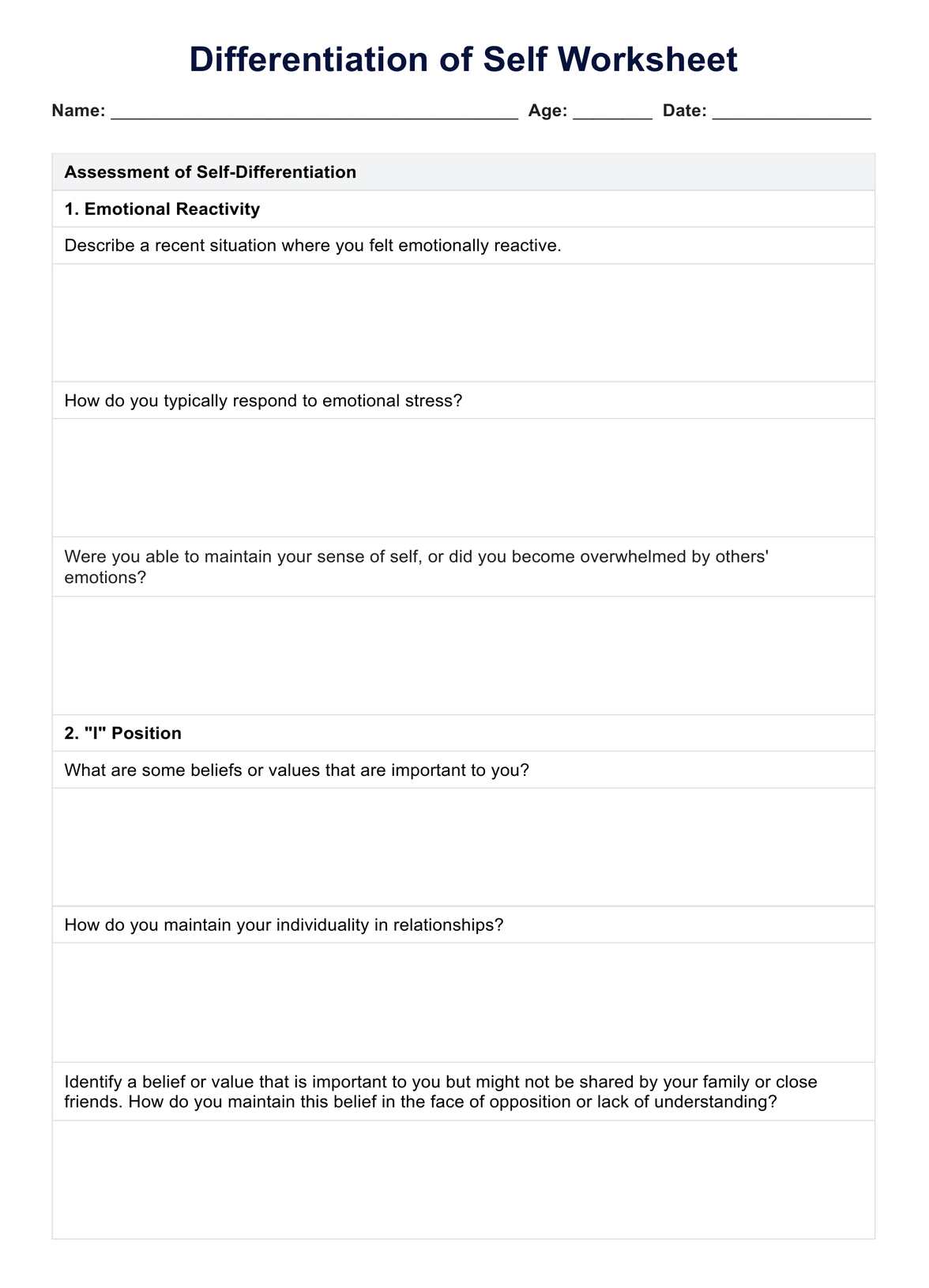
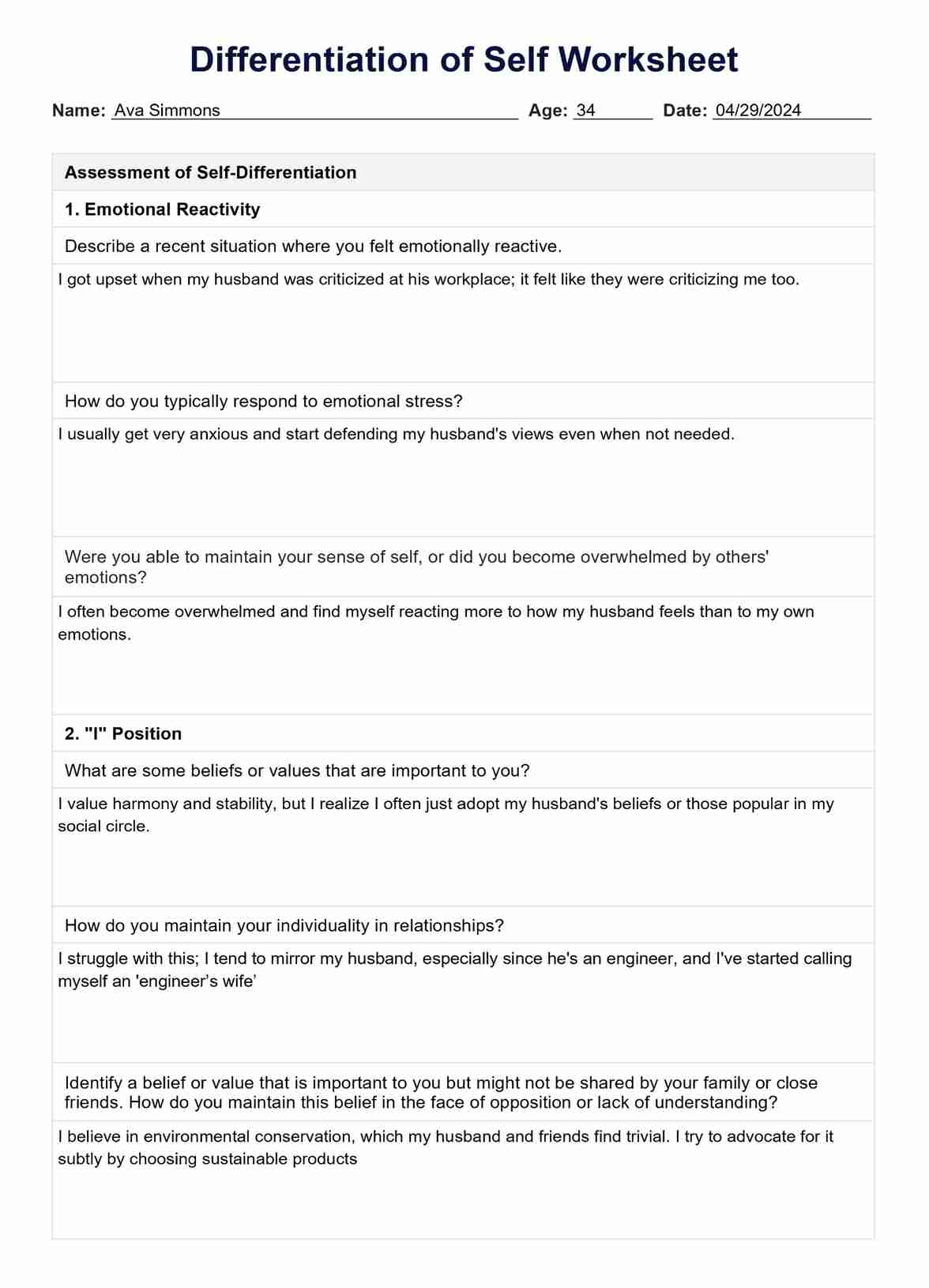

















-template.jpg)



















































































